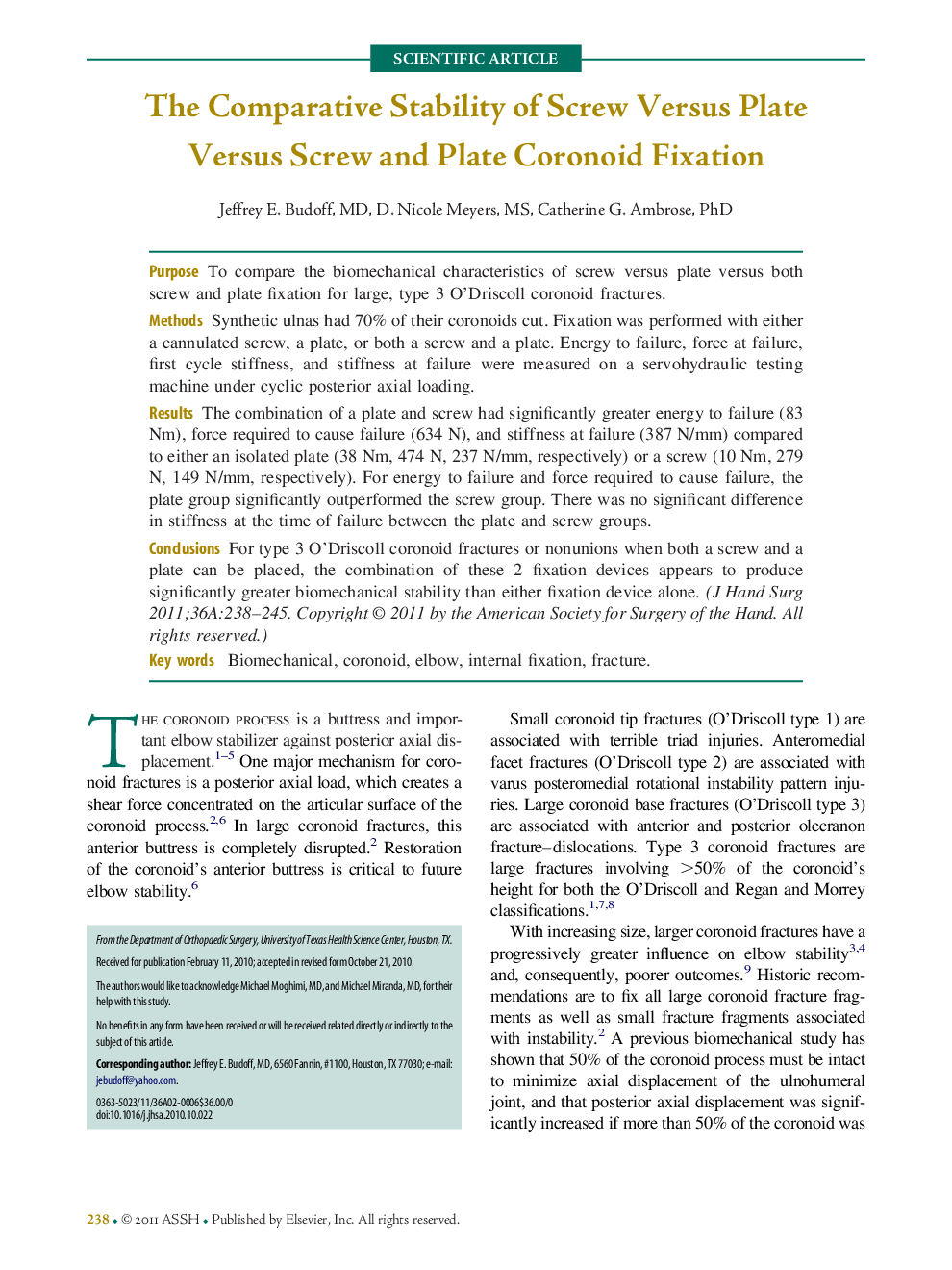| کد مقاله | کد نشریه | سال انتشار | مقاله انگلیسی | نسخه تمام متن |
|---|---|---|---|---|
| 4068047 | 1604412 | 2011 | 8 صفحه PDF | دانلود رایگان |

PurposeTo compare the biomechanical characteristics of screw versus plate versus both screw and plate fixation for large, type 3 O'Driscoll coronoid fractures.MethodsSynthetic ulnas had 70% of their coronoids cut. Fixation was performed with either a cannulated screw, a plate, or both a screw and a plate. Energy to failure, force at failure, first cycle stiffness, and stiffness at failure were measured on a servohydraulic testing machine under cyclic posterior axial loading.ResultsThe combination of a plate and screw had significantly greater energy to failure (83 Nm), force required to cause failure (634 N), and stiffness at failure (387 N/mm) compared to either an isolated plate (38 Nm, 474 N, 237 N/mm, respectively) or a screw (10 Nm, 279 N, 149 N/mm, respectively). For energy to failure and force required to cause failure, the plate group significantly outperformed the screw group. There was no significant difference in stiffness at the time of failure between the plate and screw groups.ConclusionsFor type 3 O'Driscoll coronoid fractures or nonunions when both a screw and a plate can be placed, the combination of these 2 fixation devices appears to produce significantly greater biomechanical stability than either fixation device alone.
Journal: The Journal of Hand Surgery - Volume 36, Issue 2, February 2011, Pages 238–245